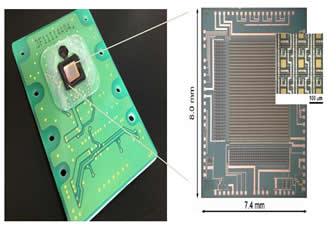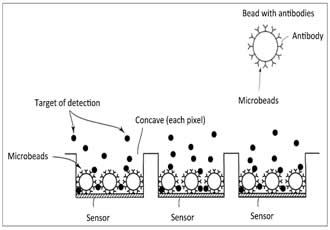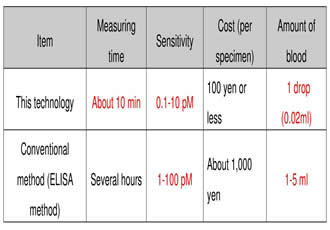Innovative image sensing technology for early diagnosis of diabetes and Alzheimer’s disease
Professor Kazuaki Sawada and Dr. Takigawa of the National Center for Geriatrics and Gerontology and colleagues at Toyohashi University of Technology have established an easy to use, low-cost, rapid, and high sensitivity semiconductor-imaging based medical diagnostic biosensing system for analyzing blood and urine for early diagnosis of ailments including diabetes and Alzheimer’s diseas
The new biosensing technology consists of a semiconductor image sensor ( ‘charge coupled device’ developed by Toyohashi University of Technology) that is sensitive to extremely small changes in electric potential, and microbeads on which antigen-antibody reactions take place. This technology will enable monitoring and diagnosis of diseases for which specific markers are known using very small volumes of blood or urine. Specifically, this technology has detected amiloid beta-peptide, an agent responsible for Alzheimer’s disease.
Contracting a disease leads to expression of proteins specific to the diseases in the blood. This new technology is used for early diagnosis of diseases by using this specific protein as the antigen and a marker that captures the protein as the antibody and checking their antigen-antibody reaction. Conventional protocols used to monitor antibody-antigen reactions employ fluorescent probes and detection of fluorescence with microscopic cameras. This process is time consuming because of the necessity to measure fluorescence from the probes and cannot be used to detect low concentrations of antigens when the fluorescence intensity is too low to detect optically.
With this technology, a antigen-antibody reaction is used as in conventional methods, but fluorescence is not measured. Instead, this method employs a semiconductor image sensor to detect minute changes in electric potential generated during an antigen-antibody reaction.
The semiconductor image sensor [Fig. 1] consists of 128 × 128 pixels that independently sense minute changes in electric potential. The detection sensitivity of antigen-antibody reactions was significantly increased by using microbeads [Fig. 2]. The figures of merit of this technology are given in Table 1. Multiple diseases can also be simultaneously diagnosed by placing different antibodies on different sensing pixels out of a total of 16,384 pixels (128×128).
Implementation of the technology will be tested for daily control of lifestyle diseases such as diabetes and in future the technology will be expanded for the early diagnosis of Alzheimer’s and Parkinson’ diseases.
Fig 1 
Fig 2 
Table 1 Advantage of this technology over the conventional method 





